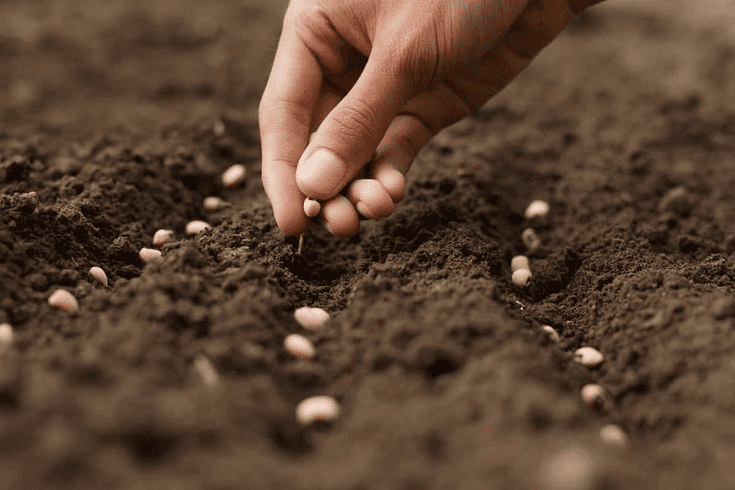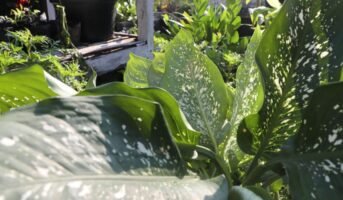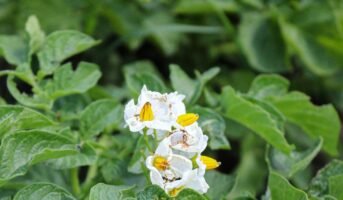The ancient and most common way of growing plants is through seed propagation. Composed of three distinct parts, once a seed reaches maturity in an ideal environment, it germinates and actively grows.
What is seed propagation?
Seed propagation is a technique of plant reproduction that involves the use of seeds to multiply, reproduce or breed seedlings. Spermatophytes are plants that generate seeds.
In seed propagation, fertilization that takes place between the gametes of plants result in formation of seeds. The pollen nuclei fuse with the egg of the ovary and forms zygote. The formed zygote is divided and is developed into embryo. Although, seed propagation happens naturally, but it can also be done artificially by agricultural producers and farmers.
Growers can also benefit from seed propagation by acquiring seedlings from plants they want to perpetuate or develop. Many gardeners collect and expand ornamental plants and vegetables from seedlings, particularly if the plant has a number of desirable characteristics.
This is due to seeds containing the genetic data of the mother plant and thus maintaining a number of the parent plant’s characteristics.
Know about What are seed balls and how do they work?
Seed propagation: How to take care of seedling?
- To create the cultivar, use seeds with the appropriate genetic characteristics. This can be achieved by acquiring seeds from a trustworthy dealer, purchasing credentialed seeds, or—if producing one’s own—in accordance with seed selection principles
- Making use of high-quality seeds. Seeds should germinate quickly in order to withstand potentially detrimental circumstances in the seed bed and yield a good return.
- Controlling seed maturation. This is achieved through the use of pre-germination remedies or seeding at the proper time.
- Providing a suitable environment for the seedlings and causing seedlings, along with enough water supply, the right temperature and adequate oxygen, as well as either lamp or shadows until the plants and arising plants are well defined.
all about Vegetative Propagation
Seed Propagation: Advantages
- Seedling trees live much longer, carry more fruit and are hardier than leaves and root trees.
- Seedlings are less expensive and easier to raise than leguminous materials.
- Plants that are challenging to propagate vegetatively, such as papaya and phalsa, must only be propagated through seed.
- In breeding for the creation of new varieties, mixtures are first elevated from seed, so this method is required in such cases.
- Seed propagation can lead to the development of possibility seedlings with excellent characteristics, which can be extremely beneficial to the garden.
- Rootstocks are typically raised from seeds about which attractive scion varieties are budded or grafted.
- Some fruits, such as citrus and mango varieties, have seeds that can produce multiple seedlings from a single seed. They are called polyembryonic because they develop from nucellus cells. If nucellar seedlings are cautiously discovered at the nursery stage, they can be used to raise uniform plants.
- Plants that grow through seed propagation have a compartively longer life and are disease free.
- Seed propagation is effective approach for transportation.

Source: Pinterest
Seed propagation: Disadvantages
- Seeds generated through cross-pollinated plants may cause changed in genetic pattern. This may result in some plants having undesirable traits.
- It takes a lot of time to grow a plant using seeds.
- They may require chemical use for germination.
- Seed propagation and production is based on climatic conditions.
- Seeds of fruits such as mango, cashew nut, papaya, jack fruit are needed to sown immediately after fruiting as they may lose their viability over time.
What is alternative of seed propagation?
While seed propagation is an effective method, note that its not always viable and effective for commercial large scale purposes. For that, an alternative is use of tissue culture.
Tissue culture is an advanced method of growing plants in vitro using tissue or cells from the plant. It is necessary to maintain aseptic conditions while introducing plants to tissue culture. With thus, the risk of diseases is eliminated.
What is seed processing for seed propagation?
This includes post-harvest activities which improves the propagation quality of seed. This is done through the removal of under-sized seeds non-seed materials, insect-damaged etc.
Housing News Viewpoint
Finally, growing from seed through seed propagation is one of the easiest and cheapest way. However, for a commercial method, one has to also explore other methods in addition to seed propagation such as tissue culture, layering, cutting or grafting.
FAQs
What are the 2 types of propagation?
Plant propagation can be classified into two types: sexual and asexual. Plant propagation in nature is most often accomplished through sexual reproduction or the manufacturing of viable seeds. These seeds sprout and develop into mature, reproducing plants when revealed to the appropriate environmental conditions.
What are the three methods of plant propagation?
The following propagation techniques will be highlighted: leaf clippings, stem clippings, simple combining, and air combining.
What are the 6 steps in seed processing?
Drying, cleaning, grading, weighing, packaging and storage are the 6 steps in seed processing.
What is vegetative propogation?
Vegetative propagation uses plants such as roots, stems and leaves for propogating.
What are the advantages of cutting propagation?
By cutting propagation, one can preserve the characteristics of a plant.
What is seed and types?
Monocotyledonous seeds. Dicotyledonous seeds.

With 16+ years of experience in various sectors, of which more than ten years in real estate, Anuradha Ramamirtham excels in tracking property trends and simplifying housing-related topics such as Rera, housing lottery, etc. Her diverse background includes roles at Times Property, Tech Target India, Indiantelevision.com and ITNation. Anuradha holds a PG Diploma degree in Journalism from KC College and has done BSc (IT) from SIES. In her leisure time, she enjoys singing and travelling.
Email: [email protected]











